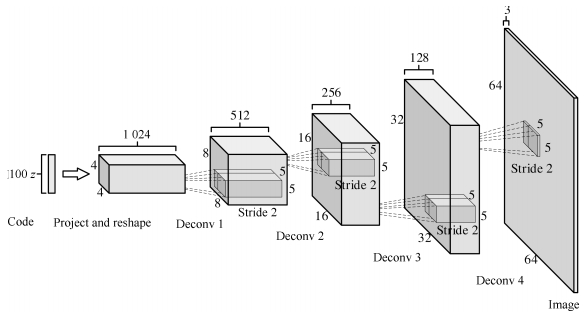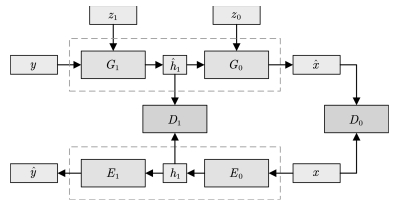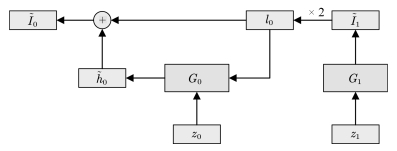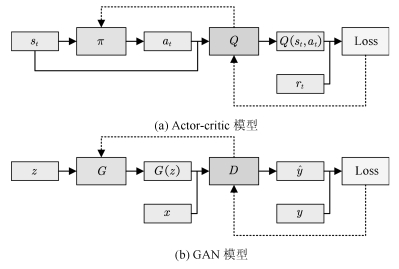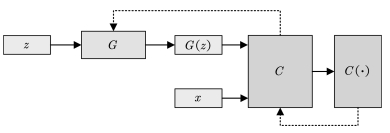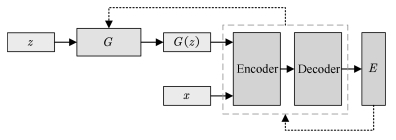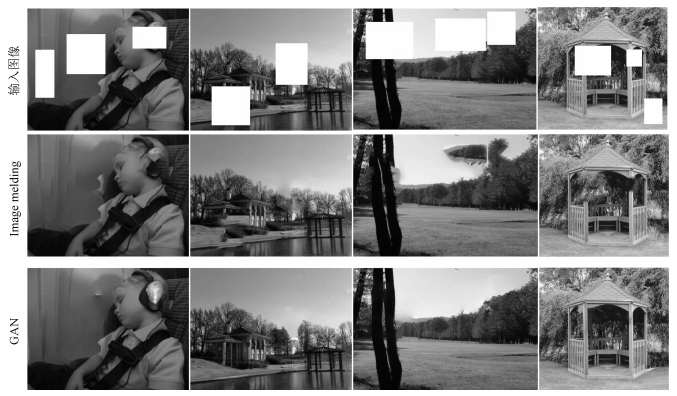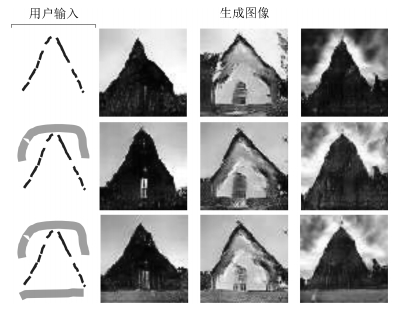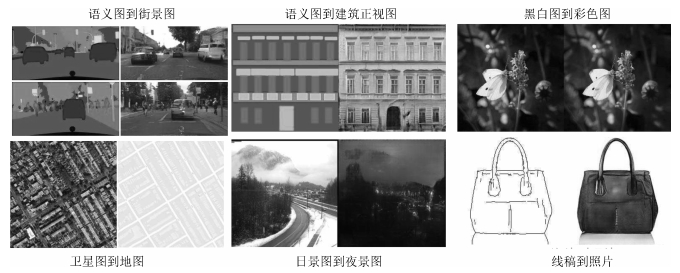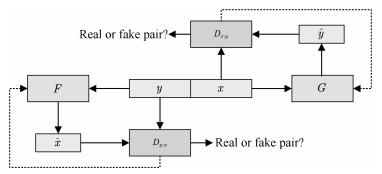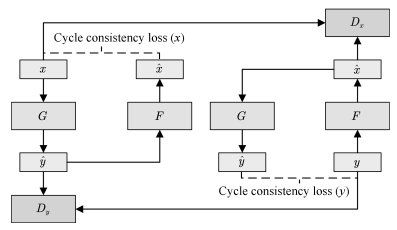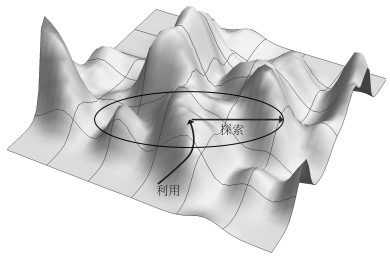|
[1]
|
Murphy K P. Machine Learning: A Probabilistic Perspective. Cambridge: MIT Press, 2012.
|
|
[2]
|
Krizhevsky A, Sutskever I, Hinton G E. ImageNet classiflcation with deep convolutional neural networks. In: Proceedings of the 25th International Conference on Neural Information Processing Systems. Lake Tahoe, Nevada, USA: ACM, 2012. 1097-1105
|
|
[3]
|
Farabet C, Couprie C, Najman L, LeCun Y. Learning hierarchical features for scene labeling. IEEE Transactions on Pattern Analysis and Machine Intelligence, 2013, 35(8): 1915-1929 doi: 10.1109/TPAMI.2012.231
|
|
[4]
|
Mikolov T, Deoras A, Povey D, Burget L, Cernocky J. Strategies for training large scale neural network language models. In: Proceedings of the 2011 IEEE Workshop on Automatic Speech Recognition and Understanding. Waikoloa, HI, USA: IEEE, 2011. 196-201
|
|
[5]
|
Hinton G, Deng L, Yu D, Dahl G E, Mohamed A R, Jaitly N, et al. Deep neural networks for acoustic modeling in speech recognition: The shared views of four research groups. IEEE Signal Processing Magazine, 2012, 29(6): 82-97 doi: 10.1109/MSP.2012.2205597
|
|
[6]
|
Collobert R, Weston J, Bottou L, Karlen M, Kavukcuoglu K, Kuksa P. Natural language processing (almost) from scratch. Journal of Machine Learning Research, 2011, 12: 2493-2537 http://www.inf.ed.ac.uk/teaching/courses/tnlp/2014/Ryan.pdf
|
|
[7]
|
Sutskever I, Vinyals O, Le Q V. Sequence to sequence learning with neural networks. In: Proceedings of the 27th International Conference on Neural Information Processing Systems. Montreal, Canada: MIT Press, 2014. 3104-3112
|
|
[8]
|
Hinton G E, Osindero S, Teh Y W. A fast learning algorithm for deep belief nets. Neural Computation, 2006, 18(7): 1527-1554 doi: 10.1162/neco.2006.18.7.1527
|
|
[9]
|
Salakhutdinov R, Hinton G. Deep Boltzmann machines. In: Proceedings of the 12th International Conference on Artiflcial Intelligence and Statistics. Clearwater Beach, Florida, USA: AISTATS, 2009. 448-455
|
|
[10]
|
Smolensky P. Information processing in dynamical systems: Foundations of harmony theory. Parallel Distributed Processing: Explorations in the Microstructure of Cognition. Cambridge, MA, USA: MIT Press, 1986.
|
|
[11]
|
Hinton G E, Zemel R S. Autoencoders, minimum description length and Helmholtz free energy. In: Proceedings of the 6th International Conference on Neural Information Processing Systems. Denver, Colorado, USA: Morgan Kaufmann Publishers Inc., 1994. 3-10
|
|
[12]
|
Bengio Y, Lamblin P, Popovici D, Larochelle H. Greedy layer-wise training of deep networks. In: Proceedings of the 21st Annual Conference on Neural Information Processing Systems. Vancouver, BC, Canada: MIT Press, 2007. 153-160
|
|
[13]
|
Goodfellow I J, Pouget-Abadie J, Mirza M, Xu B, WardeFarley D, Ozair S, et al. Generative adversarial nets. In: Proceedings of the 27th International Conference on Neural Information Processing Systems. Montreal, Canada: MIT Press, 2014. 2672-2680
|
|
[14]
|
Goodfellow I. NIPS 2016 tutorial: Generative adversarial networks. arXiv preprint arXiv: 1701. 00160, 2016
|
|
[15]
|
王坤峰, 苟超, 段艳杰, 林懿伦, 郑心湖, 王飞跃.生成式对抗网络GAN的研究进展与展望.自动化学报, 2017, 43(3): 321-332 http://www.aas.net.cn/CN/abstract/abstract19012.shtmlWang Kun-Feng, Gou Chao, Duan Yan-Jie, Lin Yi-Lun, Zheng Xin-Hu, Wang Fei-Yue. Generative adversarial networks: The state of the art and beyond. Acta Automatica Sinica, 2017, 43(3): 321-332 http://www.aas.net.cn/CN/abstract/abstract19012.shtml
|
|
[16]
|
LeCun Y, Bengio Y, Hinton G. Deep learning. Nature, 2015, 521(7553): 436-444 doi: 10.1038/nature14539
|
|
[17]
|
Rumelhart D E, Hinton G E, Williams R J. Learning representations by back-propagating errors. Nature, 1986, 323(6088): 533-536 doi: 10.1038/323533a0
|
|
[18]
|
Le Cun Y, Boser B, Denker J S, Howard R E, Habbard W, Jackel L D, et al. Handwritten digit recognition with a back-propagation network. In: Proceedings of the 1990 Advances in Neural Information Processing Systems. San Francisco, CA, USA: Morgan Kaufmann Publishers Inc., 1990. 396-404
|
|
[19]
|
Lecun Y, Bottou L, Bengio Y, Hafiner P. Gradient-based learning applied to document recognition. Proceedings of the IEEE, 1998, 86(11): 2278-2324 doi: 10.1109/5.726791
|
|
[20]
|
Hochreiter S. Untersuchungen zu dynamischen neuronalen Netzen[Ph. D. dissertation], Technische Universitt München, München, Germany, 1991
|
|
[21]
|
Bengio Y, Simard P, Frasconi P. Learning long-term dependencies with gradient descent is difficult. IEEE Transactions on Neural Networks, 1994, 5(2): 157-166 doi: 10.1109/72.279181
|
|
[22]
|
Hochreiter S, Schmidhuber J. Long short-term memory. Neural Computation, 1997, 9(8): 1735-1780 doi: 10.1162/neco.1997.9.8.1735
|
|
[23]
|
Nair V, Hinton G E. Rectifled linear units improve restricted Boltzmann machines. In: Proceedings of the 27th International Conference on Machine Learning. Haifa, Israel: Omni Press, 2010. 807-814
|
|
[24]
|
Srivastava N, Hinton G E, Krizhevsky A, Sutskever I, Salakhutdinov R. Dropout: A simple way to prevent neural networks from overfltting. Journal of Machine Learning Research, 2014, 15(1): 1929-1958
|
|
[25]
|
Kingma D P, Ba J. Adam: A method for stochastic optimization. arXiv preprint arXiv: 1412. 6980, 2014
|
|
[26]
|
Chellapilla K, Puri S, Simard P. High performance convolutional neural networks for document processing. In: Proceedings of the 10th International Workshop on Frontiers in Handwriting Recognition. La Baule, France: Suvisoft, 2006.
|
|
[27]
|
Lacey G, Taylor G W, Areibi S. Deep learning on FPGAs: Past, present, and future. arXiv preprint arXiv: 1602. 04283, 2016
|
|
[28]
|
Jouppi N P, Young C, Patil N, Patterson D, Agrawal G, Bajwa R, et al. In-datacenter performance analysis of a tensor processing unit. In: Proceedings of the 44th Annual International Symposium on Computer Architecture. Toronto, ON, Canada: ACM, 2017. 1-12
|
|
[29]
|
Dean J, Corrado G S, Monga R, Chen K, Devin M, Le Q V, et al. Large scale distributed deep networks. In: Proceedings of the 25th International Conference on Neural Information Processing Systems. Lake Tahoe, Nevada, USA: Curran Associates Inc., 2012. 1223-1231
|
|
[30]
|
Bergstra J, Bastien F, Breuleux O, Lamblin P, Pascanu R, Delalleau O, et al. Theano: Deep learning on GPUs with python. Journal of Machine Learning Research, 2011, 1: 1-48 http://citeseerx.ist.psu.edu/viewdoc/summary?doi=10.1.1.678.1889
|
|
[31]
|
Collobert R, Kavukcuoglu K, Farabet C. Torch7: A Matlab-like environment for machine learning. In: BigLearn, NIPS Workshop. Martigny, Switzerland: Idiap Research Institute, 2011
|
|
[32]
|
Paszke A, Gross S, Chintala S, Chanan G. PyTorch: Tensors and dynamic neural networks in Python with strong GPU acceleration[Online], available: http://pytorch.org/, April 31, 2018
|
|
[33]
|
Abadi M, Agarwal A, Barham P, Brevdo E, Chen Z F, Citro C, et al. TensorFlow: Large-scale machine learning on heterogeneous distributed systems. arXiv preprint arXiv: 1603. 04467, 2016
|
|
[34]
|
Li F F, Deng J. ImageNet: Where are we going? and where have we been?. In: Presented at the 2017 Conference on Computer Vision and Pattern Recognition[Online], available: https://www.youtube.com/watch?v=jYvBmJo7qjc, April 31, 2018
|
|
[35]
|
Hastie T, Tibshirani R, Friedman J. Unsupervised learning. The Elements of Statistical Learning: Data Mining, Inference, and Prediction. New York, NY, USA: Springer, 2009. 485-585
|
|
[36]
|
Bengio Y. Learning deep architectures for AI. Foundations and Trends in Machine Learning, 2009, 2(1): 1-127 http://www.docin.com/p-1661610042.html
|
|
[37]
|
Werbos P J. Learning how the world works: Speciflcations for predictive networks in robots and brains. In: Proceedings of IEEE International Conference on Systems, Man and Cybernetics. New York, NY, USA: IEEE, 1987.
|
|
[38]
|
Opper M, Archambeau C. The variational Gaussian approximation revisited. Neural Computation, 2009, 21(3): 786-792 doi: 10.1162/neco.2008.08-07-592
|
|
[39]
|
Kingma D P, Welling M. Auto-encoding variational Bayes. arXiv preprint arXiv: 1312. 6114, 2013
|
|
[40]
|
Arjovsky M, Bottou L. Towards principled methods for training generative adversarial networks. arXiv preprint arXiv: 1701. 04862, 2017
|
|
[41]
|
Salimans T, Goodfellow I, Zaremba W, Cheung V, Radford A, Chen X. Improved techniques for training GANs. arXiv preprint arXiv: 1606. 03498, 2016
|
|
[42]
|
Heusel M, Ramsauer H, Unterthiner T, Nessler B, Hochreiter S. GANs trained by a two time-scale update rule converge to a local Nash equilibrium. arXiv preprint arXiv: 1706. 08500, 2017
|
|
[43]
|
Miyato T, Kataoka T, Koyama M, Yoshida Y. Spectral normalization for generative adversarial networks. arXiv preprint arXiv: 1802. 05957, 2018
|
|
[44]
|
Papineni K, Roukos S, Ward T, Zhu W J. BLEU: A method for automatic evaluation of machine translation. In: Proceedings of the 40th Annual Meeting on Association for Computational Linguistics. Philadelphia, PA, USA: ACL, 2002. 311-318
|
|
[45]
|
Lucic M, Kurach K, Michalski M, Gelly S, Bousquet O. Are GANs created equal? A large-scale study. arXiv preprint arXiv: 1711. 10337, 2017
|
|
[46]
|
Theis L, van den Oord A, Bethge M. A note on the evaluation of generative models. arXiv preprint arXiv: 1511. 01844, 2015
|
|
[47]
|
Radford A, Metz L, Chintala S. Unsupervised representation learning with deep convolutional generative adversarial networks. arXiv preprint arXiv: 1511. 06434, 2015
|
|
[48]
|
Zeiler M D, Taylor G W, Fergus R. Adaptive deconvolutional networks for mid and high level feature learning. In: Proceedings of the 2011 IEEE International Conference on Computer Vision. Barcelona, Spain: IEEE, 2011. 2018-2025
|
|
[49]
|
Mirza M, Osindero S. Conditional generative adversarial nets. arXiv preprint arXiv: 1411. 1784, 2014
|
|
[50]
|
Odena A, Olah C, Shlens J. Conditional image synthesis with auxiliary classifler GANs. arXiv preprint arXiv: 1610. 09585, 2016
|
|
[51]
|
Chen X, Duan Y, Houthooft R, Schulman J, Sutskever I, Abbeel P. Infogan: Interpretable representation learning by information maximizing generative adversarial nets. In: Proceedings of the 30th Conference on Neural Information Processing Systems. Barcelona, Spain: NIPS, 2016. 2172-2180
|
|
[52]
|
Larsen A B L, Sonderby S K, Larochelle H, Winther O. Autoencoding beyond pixels using a learned similarity metric. arXiv preprint arXiv: 1512. 09300, 2015
|
|
[53]
|
Warde-Farley D, Bengio Y. Improving generative adversarial networks with denoising feature matching. In: International Conference on Learning Representations. 2017
|
|
[54]
|
Nguyen A, Clune J, Bengio Y, Dosovitskiy A, Yosinski J. Plug & play generative networks: Conditional iterative generation of images in latent space. In: Proceedings of the 2017 IEEE Conference on Computer Vision and Pattern Recognition. Honolulu, Hawaii, USA: IEEE, 2017. 3510-3520
|
|
[55]
|
Rosca M, Lakshminarayanan B, Warde-Farley D, Mohamed S. Variational Approaches for auto-encoding generative adversarial networks. arXiv preprint arXiv: 1706. 04987, 2017
|
|
[56]
|
Wu J J, Zhang C K, Xue T F, Freeman B, Tenenbaum J. Learning a probabilistic latent space of object shapes via 3D generative-adversarial modeling. In: Proceedings of the 30th Conference on Neural Information Processing Systems. Barcelona, Spain: NIPS, 2016. 82-90
|
|
[57]
|
Iofie S, Szegedy C. Batch normalization: Accelerating deep network training by reducing internal covariate shift. In: Proceedings of the 32nd International Conference on Machine Learning. Lille, France: PMLR, 2015. 448-456
|
|
[58]
|
Salimans T, Kingma D P. Weight normalization: A simple reparameterization to accelerate training of deep neural networks. In: Proceedings of the 30th Conference on Neural Information Processing Systems. Barcelona, Spain: NIPS, 2016. 901-909
|
|
[59]
|
Xiang S T, Li H. On the efiects of batch and weight normalization in generative adversarial networks. arXiv preprint arXiv: 1704. 03971, 2017
|
|
[60]
|
Dietterich T G. Ensemble methods in machine learning. Multiple Classifler Systems. Berlin, Heidelberg, Germany: Springer, 2000. 1-15
|
|
[61]
|
Zhou Z H, Wu J X, Tang W. Ensembling neural networks: Many could be better than all. Artiflcial Intelligence, 2002, 137(1): 239-263 https://core.ac.uk/download/pdf/82151182.pdf
|
|
[62]
|
Tolstikhin I, Gelly S, Bousquet O, Simon-Gabriel C J, Schölkopf B. AdaGAN: Boosting generative models. arXiv preprint arXiv: 1701. 02386, 2017
|
|
[63]
|
Huang X, Li Y X, Poursaeed O, Hopcroft J, Belongie S. Stacked generative adversarial networks. In: Proceedings of the 2017 IEEE Conference on Computer Vision and Pattern Recognition. Honolulu, HI, USA: IEEE, 2017.
|
|
[64]
|
Denton E, Chintala S, Szlam A, Fergus R. Deep generative image models using a Laplacian pyramid of adversarial networks. In: Proceedings of the 29th Annual Conference on Neural Information Processing Systems. Montreal, Canada: Curran Associates, Inc., 2015. 1486-1494
|
|
[65]
|
Karras T, Aila T, Laine S, Lehtinen J. Progressive Growing of GANs for improved quality, stability, and variation. arXiv preprint arXiv: 1710. 10196, 2017
|
|
[66]
|
Liu M Y, Tuzel O. Coupled generative adversarial networks. In: Proceedings of the 30th Conference on Neural Information Processing Systems. Barcelona, Spain: NIPS, 2016. 469-477
|
|
[67]
|
Ghosh A, Kulharia V, Namboodiri V, Torr P H S, Dokania P K. Multi-agent diverse generative adversarial networks. arXiv preprint arXiv: 1704. 02906, 2017
|
|
[68]
|
Mescheder L, Nowozin S, Geiger A. The Numerics of GANs. arXiv preprint arXiv: 1705. 10461, 2017
|
|
[69]
|
Sutton R S, McAllester D A, Singh S P, Mansour Y. Policy gradient methods for reinforcement learning with function approximation. In: Proceedings of the 12th International Conference on Neural Information Processing Systems. Denver, CO, USA: MIT Press, 1999. 1057-1063
|
|
[70]
|
Grondman I, Busoniu L, Lopes G A D, Babuska R. A survey of actor-critic reinforcement learning: Standard and natural policy gradients. IEEE Transactions on Systems, Man, and Cybernetics, Part C (Applications and Reviews), 2012, 42(6): 1291-1307 doi: 10.1109/TSMCC.2012.2218595
|
|
[71]
|
Pfau D, Vinyals O. Connecting generative adversarial networks and actor-critic methods. arXiv preprint arXiv: 1610. 01945, 2016
|
|
[72]
|
Sutton R S, Barto A G. Reinforcement Learning: An Introduction. Cambridge, UK: MIT Press, 1998.
|
|
[73]
|
Goodfellow I. AMA (Ask Me Anything) about the GANs (Generative Adversarial Nets) paper[Online], available: https://fermatslibrary.com/arxivcomments?url=https%3A%2F%2Farxiv.org%2Fpdf%2F1406.2661.pdf, April 31, 2018
|
|
[74]
|
Williams R J. Simple statistical gradient-following algorithms for connectionist reinforcement learning. Machine Learning, 1992, 8(3-4): 229-256 doi: 10.1007/BF00992696
|
|
[75]
|
Yu L T, Zhang W N, Wang J, Yu Y. SeqGAN: Sequence generative adversarial nets with policy gradient. arXiv preprint arXiv: 1609. 05473, 2016
|
|
[76]
|
Fedus W, Goodfellow I, Dai A M. MaskGAN: Better text generation via fllling in the. arXiv preprint arXiv: 1801. 07736, 2018
|
|
[77]
|
Ganin Y, Kulkarni T, Babuschkin I, Eslami S M A, Vinyals O. Synthesizing programs for images using reinforced adversarial learning. arXiv preprint arXiv: 1804. 01118, 2018
|
|
[78]
|
Goodfellow I J. On distinguishability criteria for estimating generative models. arXiv preprint arXiv: 1412. 6515, 2014
|
|
[79]
|
Arora S, Ge R, Liang Y Y, Ma T Y, Zhang Y. Generalization and equilibrium in generative adversarial nets (GANs). arXiv preprint arXiv: 1703. 00573, 2017
|
|
[80]
|
Qi G J. Loss-sensitive generative adversarial networks on Lipschitz densities. arXiv preprint arXiv: 1701. 06264, 2017
|
|
[81]
|
Arjovsky M, Chintala S, Bottou L. Wasserstein GAN. arXiv preprint arXiv: 1701. 07875, 2017
|
|
[82]
|
Rachev S T, R M. Duality Theorems For Kantorovich-Rubinstein And Wasserstein Functionals. Warszawa: Instytut Matematyczny Polskiej Akademi Nauk, 1990.
|
|
[83]
|
Gulrajani I, Ahmed F, Arjovsky M, Dumoulin V, Courville A. Improved training of wasserstein GANs. arXiv preprint arXiv: 1704. 00028, 2017
|
|
[84]
|
Zhao J B, Mathieu M, LeCun Y. Energy-based generative adversarial network. arXiv preprint arXiv: 1609. 03126, 2016
|
|
[85]
|
Wang R H, Cully A, Chang H J, Demiris Y. MAGAN: Margin adaptation for generative adversarial networks. arXiv preprint arXiv: 1704. 03817, 2017
|
|
[86]
|
Iizuka S, Simo-Serra E, Ishikawa H. Globally and locally consistent image completion. ACM Transactions on Graphics, 2017, 36(4): Article No. 107 https://www.cs.siue.edu/~wwhite/CS482/SIGGRAPHPapers/107-0331-iizuka.pdf
|
|
[87]
|
Li Y J, Liu S F, Yang J M, Yang M H. Generative face completion. In: Proceedings of the 2017 IEEE Conference on Computer Vision and Pattern Recognition. Honolulu, Hawaii, USA: IEEE, 2017. 5892-5900
|
|
[88]
|
Ledig C, Theis L, Huszar F, Caballero J, Cunningham A, Acosta A, et al. Photo-realistic single image superresolution using a generative adversarial network. arXiv preprint arXiv: 1609. 04802, 2016
|
|
[89]
|
Lotter W, Kreiman G, Cox D. Unsupervised learning of visual structure using predictive generative networks. arXiv preprint arXiv: 1511. 06380, 2015
|
|
[90]
|
Lotter W, Kreiman G, Cox D. Deep predictive coding networks for video prediction and unsupervised learning. arXiv preprint arXiv: 1605. 08104, 2016
|
|
[91]
|
Kupyn O, Budzan V, Mykhailych M, Mishkin D, Matas J. DeblurGAN: Blind motion deblurring using conditional adversarial networks. arXiv preprint arXiv: 1711. 07064, 2017
|
|
[92]
|
Huang J B, Kang S B, Ahuja N, Kopf J. Image completion using planar structure guidance. ACM Transactions on Graphics, 2014, 33(4): Article No. 129 http://www.academia.edu/7162612/Image_Completion_using_Planar_Structure_Guidance
|
|
[93]
|
Goodfellow I J, Shlens J, Szegedy C. Explaining and harnessing adversarial examples. arXiv preprint arXiv: 1412. 6572, 2014
|
|
[94]
|
Papernot N, Carlini N, Goodfellow I, Feinman R, Faghri F, Matyasko A, et al. cleverhans v2. 0. 0: An adversarial machine learning library. arXiv preprint arXiv: 1610. 00768, 2016
|
|
[95]
|
Yang C F, Wu Q, Li H, Chen Y R. Generative poisoning attack method against neural networks. arXiv preprint arXiv: 1703. 01340, 2017
|
|
[96]
|
Shen S, Jin G, Gao K, Zhang Y. APE-GAN: Adversarial Perturbation Elimination with GAN. arXiv preprint arXiv: 1707. 05474, 2017.
|
|
[97]
|
Lee H, Han S, Lee J. Generative adversarial trainer: Defense to adversarial perturbations with GAN. arXiv preprint arXiv: 1705. 03387, 2017
|
|
[98]
|
Johnson-Roberson M, Barto C, Mehta R, Sridhar S N, Rosaen K, Vasudevan R. Driving in the matrix: Can virtual worlds replace human-generated annotations for real world tasks? In: Proceedings of the 2017 IEEE International Conference on Robotics and Automation. Singapore: Institute of Electrical and Electronics Engineers Inc., 2017. 746-753
|
|
[99]
|
Bousmalis K, Silberman N, Dohan D, Erhan D, Krishnan D. Unsupervised pixel-level domain adaptation with generative adversarial networks. In: Proceedings of the 2017 IEEE Conference on Computer Vision and Pattern Recognition. Honolulu, Hawaii, USA: IEEE, 2017. 95-104
|
|
[100]
|
Shrivastava A, Pflster T, Tuzel O, Susskind J, Wang W D, Webb R. Learning from simulated and unsupervised images through adversarial training. In: Proceedings of the 2017 IEEE Conference on Computer Vision and Pattern Recognition. Honolulu, Hawaii, USA: IEEE, 2017. 2242-2251
|
|
[101]
|
Bousmalis K, Irpan A, Wohlhart P, Bai Y F, Kelcey M, Kalakrishnan M, et al. Using simulation and domain adaptation to improve efficiency of deep robotic grasping. arXiv preprint arXiv: 1709. 07857, 2017
|
|
[102]
|
Santana E, Hotz G. Learning a driving simulator. arXiv preprint arXiv: 1608. 01230, 2016
|
|
[103]
|
Huang V, Ley T, Vlachou-Konchylaki M, Hu W F. Enhanced experience replay generation for efficient reinforcement learning. arXiv preprint arXiv: 1705. 08245, 2017
|
|
[104]
|
Wang K F, Gou C, Zheng N N, Rehg J M, Wang F Y. Parallel vision for perception and understanding of complex scenes: Methods, framework, and perspectives. Artiflcial Intelligence Review, 2017, 48(3): 299-329 doi: 10.1007/s10462-017-9569-z
|
|
[105]
|
Yu Y, Qu W Y, Li N, Guo Z M. Open-category classiflcation by adversarial sample generation. arXiv preprint arXiv: 1705. 08722, 2017
|
|
[106]
|
Odena A. Semi-supervised learning with generative adversarial networks. arXiv preprint arXiv: 1606. 01583, 2016
|
|
[107]
|
Lamb A M, Goyal A, Zhang Y, Zhang S Z, Courville A, Bengio Y. Professor forcing: A new algorithm for training recurrent networks. In: Proceedings of the 29th Conference on Neural Information Processing Systems. Barcelona, Spain: NIPS, 2016. 4601-4609
|
|
[108]
|
Johnson J, Gupta A, Fei-Fei L. Image generation from scene graphs. arXiv preprint arXiv: 1804. 01622, 2018
|
|
[109]
|
Reed S, Akata Z, Yan X C, Logeswaran L, Schiele B, Lee H. Generative adversarial text to image synthesis. arXiv preprint arXiv: 1605. 05396, 2016
|
|
[110]
|
Zhu J Y, Krähenbühl P, Shechtman E, Efros A A. Generative visual manipulation on the natural image manifold. In: Proceedings of the 2016 European Conference on Computer Vision. Amsterdam, The Netherlands: Springer, 2016. 597-613
|
|
[111]
|
Brock A, Lim T, Ritchie J M, Weston N. Neural photo editing with introspective adversarial networks. arXiv preprint arXiv: 1609. 07093, 2016
|
|
[112]
|
Isola P, Zhu J Y, Zhou T H, Efros A A. Image-to-image translation with conditional adversarial networks. arXiv preprint arXiv: 1611. 07004, 2016
|
|
[113]
|
Wang T C, Liu M Y, Zhu J Y, Tao A, Kautz J, Catanzaro B. High-resolution image synthesis and semantic manipulation with conditional GANs. arXiv preprint arXiv: 1711. 11585, 2017
|
|
[114]
|
He D, Xia Y, Qin T, Wang L W, Yu N H, Liu T Y, et al. Dual learning for machine translation. In: Proceedings of the 30th Conference on Neural Information Processing Systems. Barcelona, Spain: NIPS, 2016. 820-828
|
|
[115]
|
Zhu J Y, Park T, Isola P, Efros A A. Unpaired image-toimage translation using cycle-consistent adversarial networks. arXiv preprint arXiv: 1703. 10593, 2017
|
|
[116]
|
Gatys L A, Ecker A S, Bethge M. A neural algorithm of artistic style. arXiv preprint arXiv: 1508. 06576, 2015
|
|
[117]
|
Ho J, Ermon S. Generative adversarial imitation learning. arXiv preprint arXiv: 1606. 03476, 2016
|
|
[118]
|
Ng A Y, Russell S J. Algorithms for inverse reinforcement learning. In: Proceedings of the 17th International Conference on Machine Learning. San Francisco, CA, USA: Morgan Kaufmann Publishers Inc., 2000. 663-670
|
|
[119]
|
Ziebart B D, Maas A L, Bagnell J A, Dey A K. Maximum Entropy Inverse Reinforcement Learning. In: Proceedings of the 23rd National Conference on Artiflcial Intelligence. Chicago, Illinois: AAAI, 2008. 1433-1438
|
|
[120]
|
Ratlifi N D, Silver D, Bagnell J A. Learning to search: Functional gradient techniques for imitation learning. Autonomous Robots, 2009, 27(1): 25-53 doi: 10.1007/s10514-009-9121-3
|
|
[121]
|
Kuefler A, Morton J, Wheeler T, Kochenderfer M. Imitating driver behavior with generative adversarial networks. In: Proceedings of the 2017 IEEE Intelligent Vehicles Symposium. Los Angeles, CA, USA: IEEE, 2017
|
|
[122]
|
Wang Z Y, Merel J, Reed S, Wayne G, de Freitas N, Heess N. Robust imitation of diverse behaviors. arXiv preprint arXiv: 1707. 02747, 2017
|
|
[123]
|
Wang J, Yu L T, Zhang W N, Gong Y, Xu Y H, Wang B Y, et al. IRGAN: A minimax game for unifying generative and discriminative information retrieval models. In: Proceedings of the 40th International ACM SIGIR Conference on Research and Development in Information Retrieval. Shinjuku, Tokyo, Japan: ACM, 2017. 515-524
|
|
[124]
|
Frakes, W B, Baeza-Yates R, (Eds. ). Information Retrieval: Data Structures And Algorithms (Vol. 331). Englewood Clifis, New Jersey: prentice Hall, 1992.
|
|
[125]
|
Hu W W, Tan Y. Generating adversarial malware examples for black-box attacks based on GAN. arXiv preprint arXiv: 1702. 05983, 2017
|
|
[126]
|
Gupta A, Zou J. Feedback GAN (FBGAN) for DNA: A novel feedback-loop architecture for optimizing protein functions. arXiv preprint arXiv: 1804. 01694, 2018
|
|
[127]
|
Wang H W, Wang J, Wang J L, Zhao M, Zhang W N, Zhang F Z, et al. GraphGAN: Graph representation learning with generative adversarial nets. arXiv preprint arXiv: 1711. 08267, 2017
|
|
[128]
|
Silver D, Schrittwieser J, Simonyan K, Antonoglou I, Huang A, Guez A, et al. Mastering the game of Go without human knowledge. Nature, 2017, 550(7676): 354-359 doi: 10.1038/nature24270
|
|
[129]
|
Wang F Y, Zhang J J, Zheng X H, Wang X, Yuan Y, Dai X X, et al. Where does AlphaGo go: From church-turing thesis to AlphaGo thesis and beyond. IEEE/CAA Journal of Automatica Sinica, 2016, 3(2): 113-120 doi: 10.1109/JAS.2016.7471613
|
|
[130]
|
Li L, Lin Y L, Zheng N N, Wang F Y. Parallel learning: A perspective and a framework. IEEE/CAA Journal of Automatica Sinica, 2017, 4(3): 389-395 doi: 10.1109/JAS.2017.7510493
|
|
[131]
|
Lin Y L, Li L, Dai X Y, Zheng N N, Wang F Y. Master general parking skill via deep learning. In: Proceedings of the 2017 IEEE Intelligent Vehicles Symposium. Los Angeles, CA, USA: IEEE, 2017.
|
|
[132]
|
Wang F Y, Zheng N N, Cao D P, Martinez C M, Li L, Liu T. Parallel driving in CPSS: A unifled approach for transport automation and vehicle intelligence. IEEE/CAA Journal of Automatica Sinica, 2017, 4(4): 577-587 doi: 10.1109/JAS.2017.7510598
|
|
[133]
|
王飞跃.生成式对抗网络的研究进展与展望.中国计算机学会通讯, 2017, 13(11): 58-62 https://www.researchgate.net/profile/Fei_Yue_Wang/publication/320827081_shengchengshiduikangwangluoGAN_deyanjiujinzhanyuzhanwang/links/59fc140ca6fdcca1f2931a80/shengchengshiduikangwangluoGAN-deyanjiujinzhanyuzhanwang.pdf
|





 下载:
下载:

